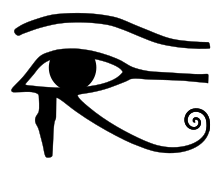Visual communication as the name suggests is communication through visual aid and is described as the conveyance of ideas and information in forms that can be read or looked upon. Visual communication solely relies on vision, and is primarily presented or expressed with two dimensional images, it includes: signs, typography, drawing, graphic design, illustration, colour and electronic resources. It also explores the idea that a visual message accompanying text has a greater power to inform, educate, or persuade a person or audience.
The evaluation of a good visual design is mainly based on measuring comprehension by the audience. However, personal aesthetic and/or artistic preference may also effect the meaning of the image, as there are no universally agreed-upon principles of beauty and ugliness. Excluding two dimensional images, there are other ways to express information visually - gestures and body language, animation (digital or analogue), and film. Visual communication by e-mail, a textual medium, is commonly expressed with ASCII art, emoticons, and embedded digital images.
The term 'visual presentation' is used to refer to the actual presentation of information through a visible medium such as text or images. Recent research in the field has focused on web design and graphically-oriented usability. Graphic designersWorld Wide Web is perhaps the most important form of communication that takes place while users are surfing the Internet. When experiencing the web, one uses the eyes as the primary sense, and therefore the visual presentation of a website is very important for users to understand the message or of the communication taking place. also use methods of visual communication in their professional practice. Visual communication on the
The Eye of Horus is often referred to as the symbol of visual communication. It is said to be a representation of an eclipse, as the corona around the pupil is like the corona around the sun during a solar eclipse.
